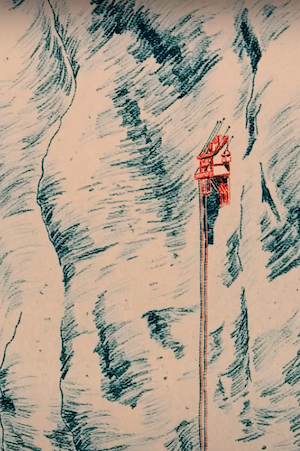read the comments
May. 29th, 2025 05:42 pmIt's a general truth of online life that you shouldn't read the comments--it's where the virulent nastiness lives.
Every now and then, that's not true though. After falling in love with the song "Xam Xam," by Cheikh Ibra Fam, I let Youtube take me on a tour of related songs.
It brought me "Gambia," by Sona Jobarteh, a beautiful song written to celebrate 50 years of Gambian independence (in 2015).
I happened to glance at the comments, and--my heart!
And this...
And this...
And this..
And on and on...
"Am from Uganda ... I am from the Caribbean ... I'm a dutch old (63) man ... I'm latina from Colombia ... Je suis de la Côte d'Ivoire 🇨🇮 ... I'm Argentinian ... I'm a Proud ERITREAN-AFRICAN ... I am from India ... I'm a japanese student ... I'm from Morocco ... I am welsh ... I am from Spain ... I am white African from Mozambique ... I'm Nigerian ... I am peruvian ... I am from Croatia ... I am from Bangladesh .... I am Congolese... Sending love from Ghana ... Greetings and best wishes from Latvia..."
(And several from the United States, too.)
All full of love for the song. Really made me feel like part of one human family.
Every now and then, that's not true though. After falling in love with the song "Xam Xam," by Cheikh Ibra Fam, I let Youtube take me on a tour of related songs.
It brought me "Gambia," by Sona Jobarteh, a beautiful song written to celebrate 50 years of Gambian independence (in 2015).
I happened to glance at the comments, and--my heart!
I'm a German, 55 years and my husband was a Gambian. He died here in Germany in 2011 (cancer). Today he would have celebrated his 62nd birthday. In 1998 he took me to his country and we spent there two years. This was the most beautiful time in my life. For the first time in my life, I felt like real living – I felt alive like never before. So I want to say "thank you" to my husband again, who showed me a place where my soul could breath. Whenever I feel down, doubting what this life is all about, I go back in my mind and think of those glory days.
And this...
Oh, i can recognise my grandmother at the end of this clip dancing with a group of women's. Thank you sister sona for futuring my granny. This will go down in history. Gambia for ever true.
And this...
I am from Ukraine and this music made me cry. It touches something deep in my heart. I think we missed Africa and we miss it. I play it and dance in the kitchen. I would like the whole world to go out in the streets and dance African dances. As not only live in our brains, but also in our bodies and our hearts.
And this..
From Somalia 🇸🇴 much love ❤️ our brothers & sisters 🇬🇲 beautiful country & beautiful people ❤️
And on and on...
"Am from Uganda ... I am from the Caribbean ... I'm a dutch old (63) man ... I'm latina from Colombia ... Je suis de la Côte d'Ivoire 🇨🇮 ... I'm Argentinian ... I'm a Proud ERITREAN-AFRICAN ... I am from India ... I'm a japanese student ... I'm from Morocco ... I am welsh ... I am from Spain ... I am white African from Mozambique ... I'm Nigerian ... I am peruvian ... I am from Croatia ... I am from Bangladesh .... I am Congolese... Sending love from Ghana ... Greetings and best wishes from Latvia..."
(And several from the United States, too.)
All full of love for the song. Really made me feel like part of one human family.
































